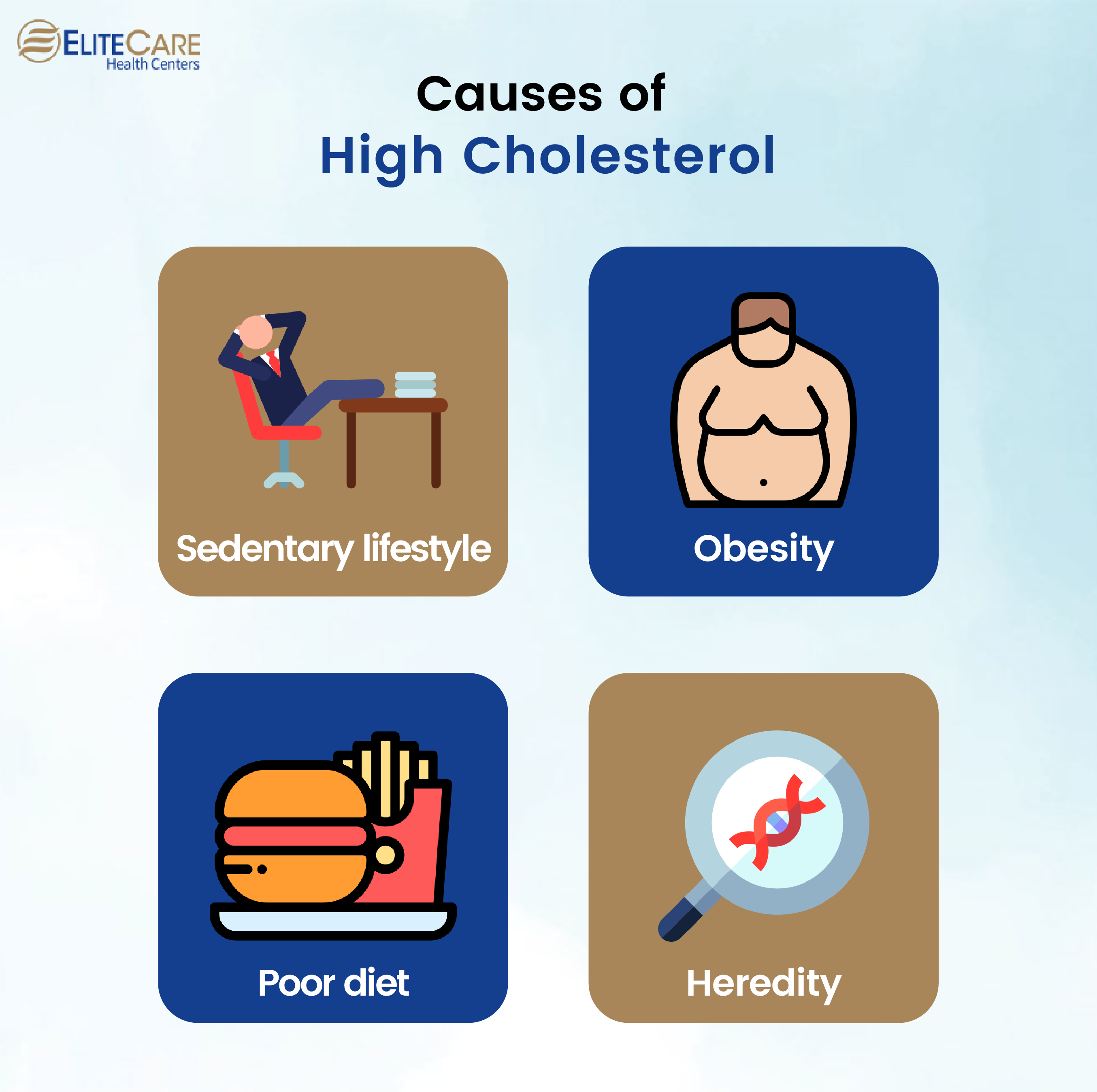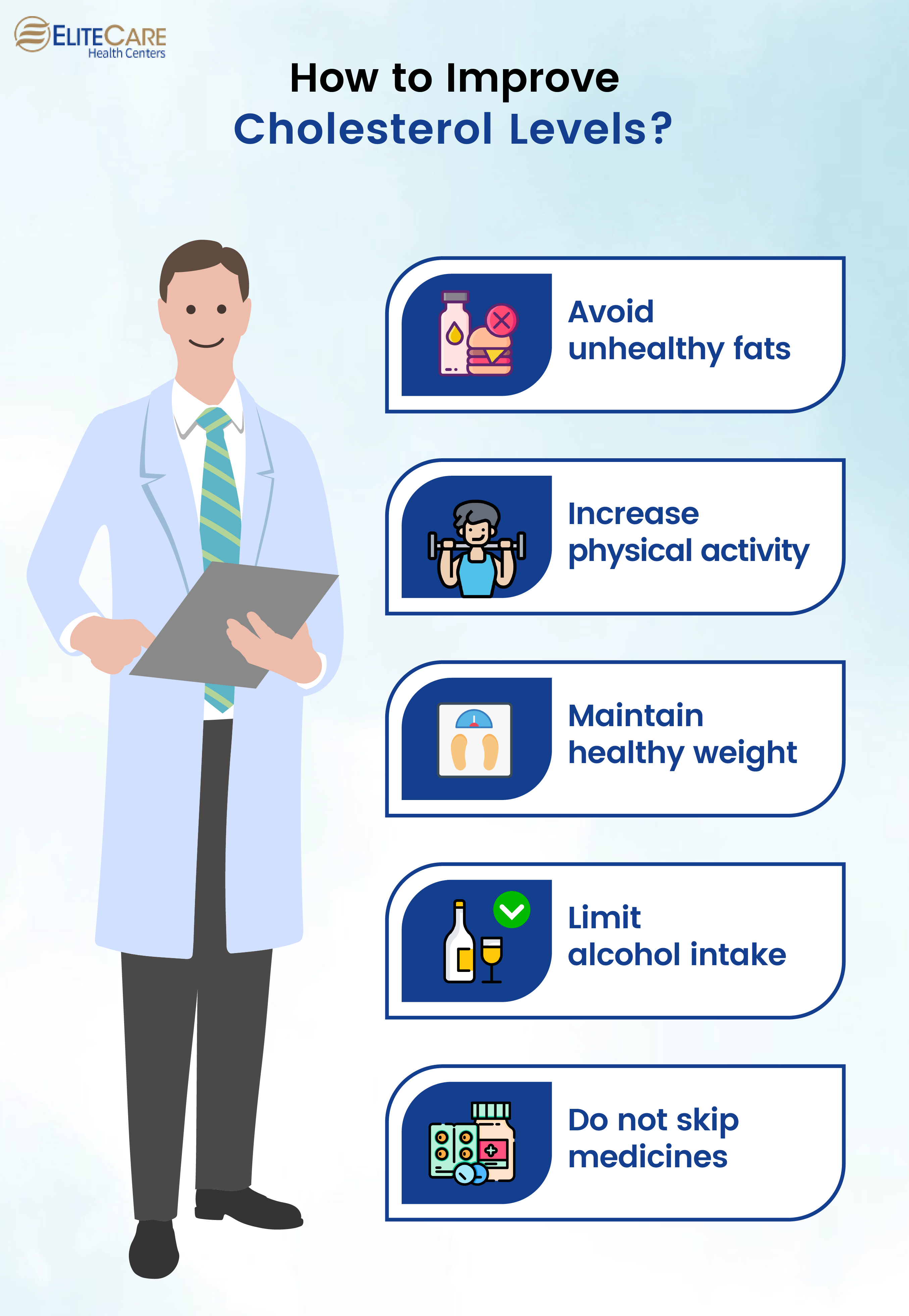
The word cholesterol is usually feared because it is mostly associated with heart disease and high blood pressure, but it is actually an essential component of our body to build healthy cells. Cholesterol becomes harmful when it exceeds safe levels in the body. High cholesterol levels can cause fatty deposits in blood vessels, restricting blood flow through the arteries. Therefore, it can result in severe medical conditions such as life-threatening strokes or heart attacks.
Risk Factors for High Cholesterol

The two types of cholesterol present in the human body are low-density lipoprotein (LDL) and high-density lipoprotein (HDL). LDL or ‘bad’ cholesterol is harmful since it is the primary reason behind the build-up of fatty deposits in the walls of the arteries.
On the other hand, HDL is known as the ‘good’ cholesterol as it helps remove other forms of harmful cholesterol from your bloodstream. A rise in both LDL and HDL can lead to an imbalance in cholesterol levels.
The following factors can lead to high cholesterol levels:
- A poor diet
- A sedentary lifestyle
- Obesity
- Heredity (Familial hypercholesterolemia)
Signs and Symptoms
Cholesterol is a silent killer because there are hardly any symptoms that indicate its imbalance in your body. Some people may experience mild chest pain or have trouble breathing, but such cases are rare. A blood test is the single most convenient way to check cholesterol levels. Hence, the Centers for Disease Control and Prevention recommends that people aged 65 and over should get their cholesterol tests and lipid profile test done annually. Book an appointment with a certified done for blood draw for the right results.
How to Improve Cholesterol Levels?
Along with regular tests, the easiest way to ensure a healthy cholesterol level is by making a few healthy lifestyle choices. Here are five steps to keep your cholesterol level balanced.

Cut down on unhealthy fats
Consuming a diet rich in saturated fats and trans-fats can increase cholesterol to alarming levels. Animal protein, which is found in red meat and full-fat dairy products, contain saturated fats that contribute to LDL production. Similarly, foods such as margarine and store-bought desserts are high in trans fats. Try to also avoid processed foods and sugary drinks as much as possible.
Instead, choose whole grains, colorful fruits, and vegetables for your diet. Oatmeal, kidney beans, and Brussels sprouts are rich in soluble fiber, which lower cholesterol by binding with it in the small intestine. Once the fiber gets attached to the cholesterol particles, it prevents them from entering the bloodstream and blocking the arteries. Omega-3-rich foods like salmon, mackerel, herring, walnuts, and flaxseeds are also effective in improving cholesterol levels.
Maintain a healthy weight
Being obese can increase the risk of heart disease as it raises LDL levels in your body. Excess body fat affects the way the human body utilizes cholesterol in its system. It can inhibit the body’s ability to remove LDL from the blood and result in fat build-up in the arteries.
Calculating the body mass index is the most accurate way to determine if your weight is in a healthy range. Individuals can easily check this by visiting the Assessing Your Weight website of the CDC. If you are overweight, consult with your doctor to start with a diet and fitness plan.
Increase physical activity
Physical activities are helpful for increasing high-density lipoprotein (HDL) or ‘good’ cholesterol. In addition, they help with weight management as well. Seniors can include low-impact aerobic exercises like walking at short intervals several times a day. Furthermore, look for ways to be more physically active through regular chores. Always consult with your physician before beginning a new exercise regime.
Drink alcohol in moderation
Alcohol, especially red wine, is safe for your health when consumed within limits. Otherwise, it can result in HDL production, which is harmful for health. Besides, it can also lead to health issues such as high blood pressure, heart failure, etc.
For seniors, up to one to two alcoholic drinks a day for men and one drink for women is considered safe.
Read More: Seniors: Are you drinking enough water?
Never skip medicines
A person already dealing with high cholesterol levels should never skip prescribed medications. If you have switched to a healthier lifestyle, get yourself checked to see the changes in your lipid profile. Consult the doctor and discontinue medication only if advised by your doctor. Also get routine wellness blood test done to monitor the cholesterol levels.
Key Takeaway
Recent research suggests that the management of cholesterol levels in older adults still imposes a challenge in clinical medicine. Although these lifestyle changes can reduce the risk, regular check-ups and screenings are recommended. For detailed guidance, visit our website www.elitecarehc.com and schedule an appointment with our board-certified physicians.






